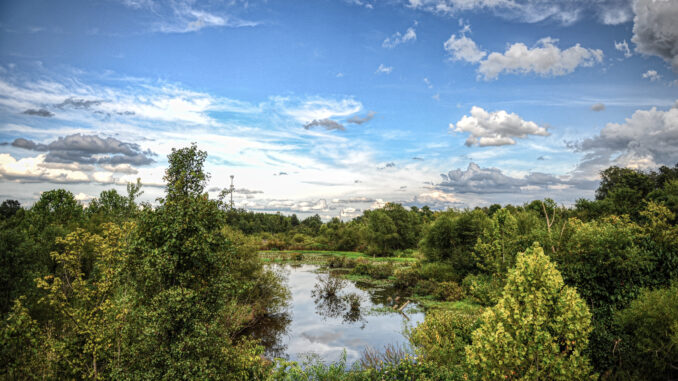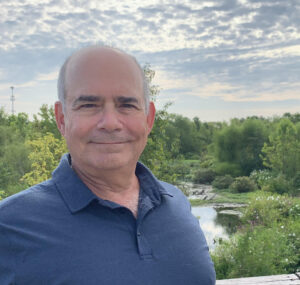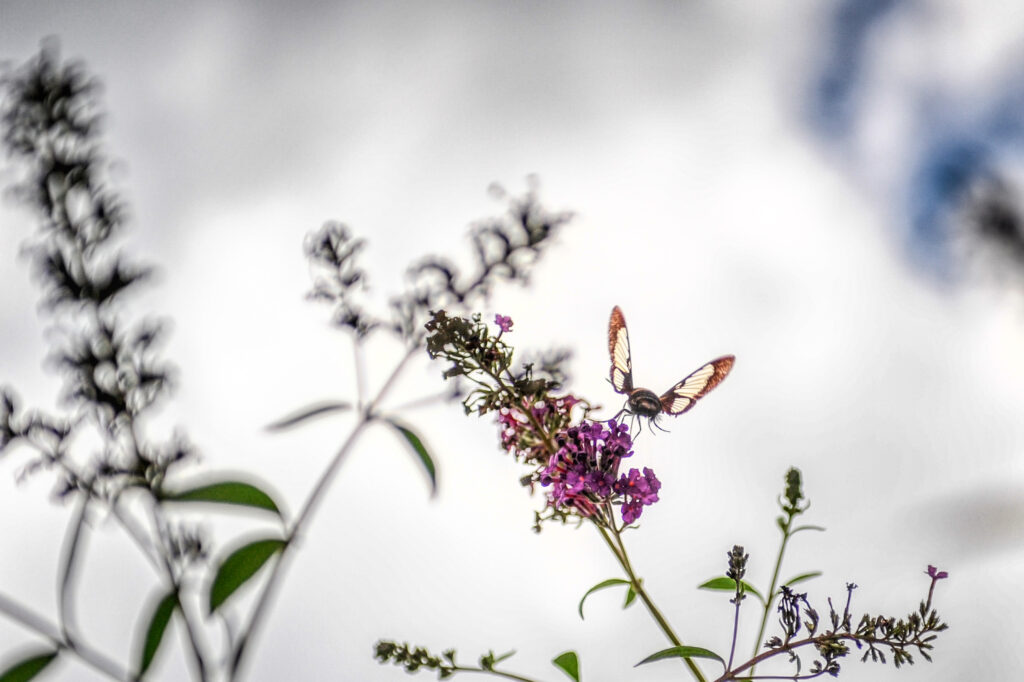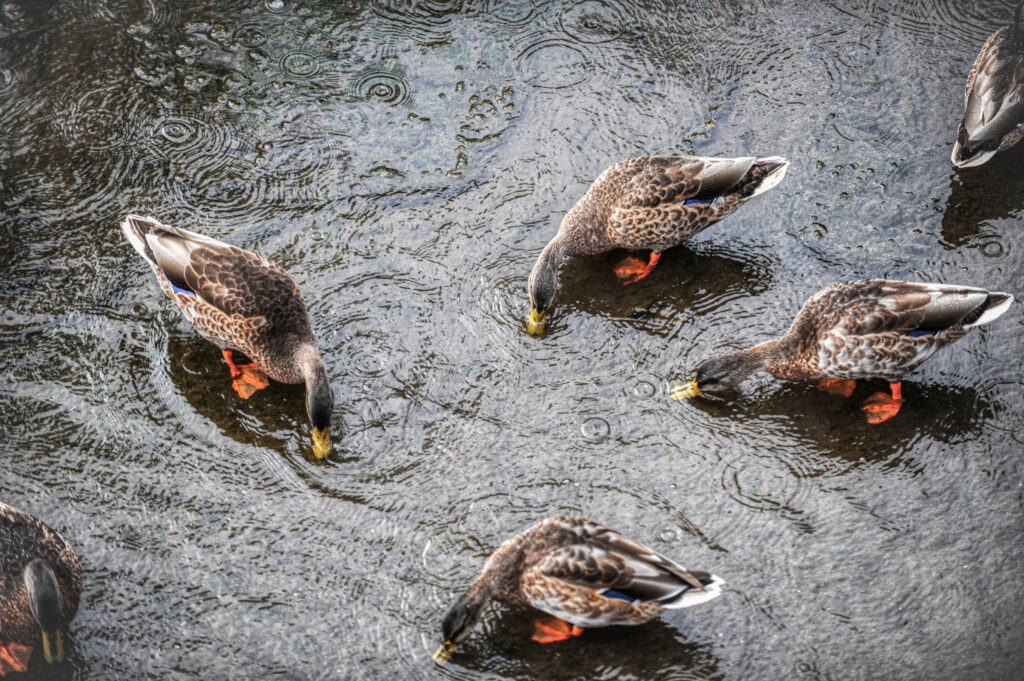
BACK TO NATURE
By Bill Kent
Nature photos by Astri Wee
Bill Kent is a prolific writer and author whose articles have appeared in The New York Times, the Philadelphia Inquirer, Kirkus Reviews and elsewhere. Captivated by the many streams, ponds and bridges in our community, the Ashburn Farm resident set out to explore these natural areas and share some of what he saw and learned with Ashburn Magazine readers.

The Japanese call it shinrin yoko, “forest bathing.” The idea is to immerse yourself in a forest for your physical and spiritual well-being.
In Ashburn, we call it “doing the trails.” We follow our dogs, push our babies in strollers, power walk, run, bike and, occasionally, pause to gaze through the dappled light coming down through the leaves, hear the water trickling under bridges, smell the air after a rain, touch the trunk of a tree that may be older than any of us are, and enjoy it.
The trails can be scary and strange. Some take you into a wilderness so dense you’d think you’re in another world. A few veer so close to homes and busy roads that they might as well be sidewalks. Others swoop through tunnels under those roads and emerge where you’d least expect to be.
The Zawistowski family loves exploring the trails around their home in the Loudoun Valley Estates neighborhood. Dad Greg, mom Meagen, daughter Mara, 7, and son Owen, 4, have used regular walks in the great outdoors to help keep them sane and grounded during this past year and a half of pandemic-imposed togetherness.
“There’s something about being outside … that just lifts you up and changes your attitude for the best,” Greg Zawistowski said. “Even without the stress and strain of the lockdown, exploring the trails would be important for us. With the lockdown, it has made all the difference.”
Mara is a huge fan of Pokemon, the kids cartoon series that has spawned an industry of games, toys and books. When she walks with her family, she comes up with Pokemon names like squirtles, piggers and spadderows for the many birds, insects, fish and other creatures they spot along the path. It’s a fun game they play.
“It’s OK to come up with crazy names for things,” said naturalist Bobby Colicci. “It’s one more way to make a connection with living things. When you give them names, they become part of your world. Learning the correct names can come later.”
FOLLOWING FOOTPRINTS
Colicci is the park naturalist at Claude Moore Park in Sterling. With degrees from Radford and George Mason University, he has spent nearly 15 years giving nature tours to people of all ages in the county where he was born and raised. So, I met up with him in Ashburn for my own personal field trip.
It’s one of those bright, not-too-cool, not-too-warm, perfectly clear days when you can’t hear cars or jets or smell the pollution wafting off the roads. We’re on the long, circular trail that winds through Bles Park, on the Potomac River at the very northern edge of Ashburn.
“When the trails are wet you can see footprints, and they aren’t dogs,” Colicci said. “We like to think these trails were made for us, but other animals use them too. Do you think they want to go through a mess of foliage to escape a predator or get a meal? They use the drainage culverts for habitats. They live under the bridges. These parks aren’t just about what helps us. What helps us, helps animals.”
In the same way that trees and plants scrub the air of some pollutants, wetlands collect rainwater and purify it as it goes into the reservoirs from which we draw our drinking water. They also absorb water and reduce the potential for flooding during storms.
“Tree roots, entire colonies of insects and macroinvertebrates — tiny, crawly, spidery things like snails and crayfish and dragonflies that are at the bottom of the food chain that turn so much of what’s in the soil into food for plants. They also clean the water and are eaten by other, bigger critters,” he explained. “Nature doesn’t waste anything. If you get down on your hands and knees and just look for a while, or you lean over a bridge railing, you can see them. There are living things everywhere you look, and we need them as much as they need us.”
The trail continues along the edge of the river and then turns south, along the western bank of Broad Run, toward athletic fields and townhomes rising over the horizon. We come to a steel bridge. Colicci leans over. “I’ve always loved watching the way water flows.”
He jumps down to the edge. “You have to see this.”
I follow and he points to what looks like streaks of mud under the arch.
“Remember what I said about things that are good for us being good for other living things? That’s a mud dauber nest. Mud daubers are a wasp that doesn’t sting humans and doesn’t bother us much. They kill spiders. If you don’t like spiders, the mud wasp is your friend.”
SPECTACULAR SCENERY
One of Ashburn’s most spectacular natural places must certainly be the wetlands preservation area in Broadlands.
Bounded by Mooreview Parkway, DeMott Drive and a Dulles Greenway exit ramp, the area was envisioned by developer Albert G. Van Metre and built at the cost of $1.1 million.
The preserve’s major draw is a boardwalk that descends over the wetlands, with benches that allow close views of flowering plantings, some of which grow so close that you can touch them. The Virginia Bird Atlas says the vast pond and the surrounding trees and grasses is a way station for 138 species of birds. During the spring and late summer, butterflies meander overhead, and the air can fill with the scent of blossoming Roses of Sharon.
Near the entrance, a wooden observation deck juts over an open pond. Look down and you’ll see small fish and large turtles gliding below. You can watch squadrons of geese and ducks zooming in for a landing.
The place is all about looking and — in some areas — touching the plants nearby. Beneath the roar of jets soaring out of Dulles Airport, and the rumble of vehicles along the Greenway, you can hear the wind rustling through the grasses and the insistent conversation of birds, some of whom will paddle up to the observation area and look at you curiously as they welcome you to their world.


